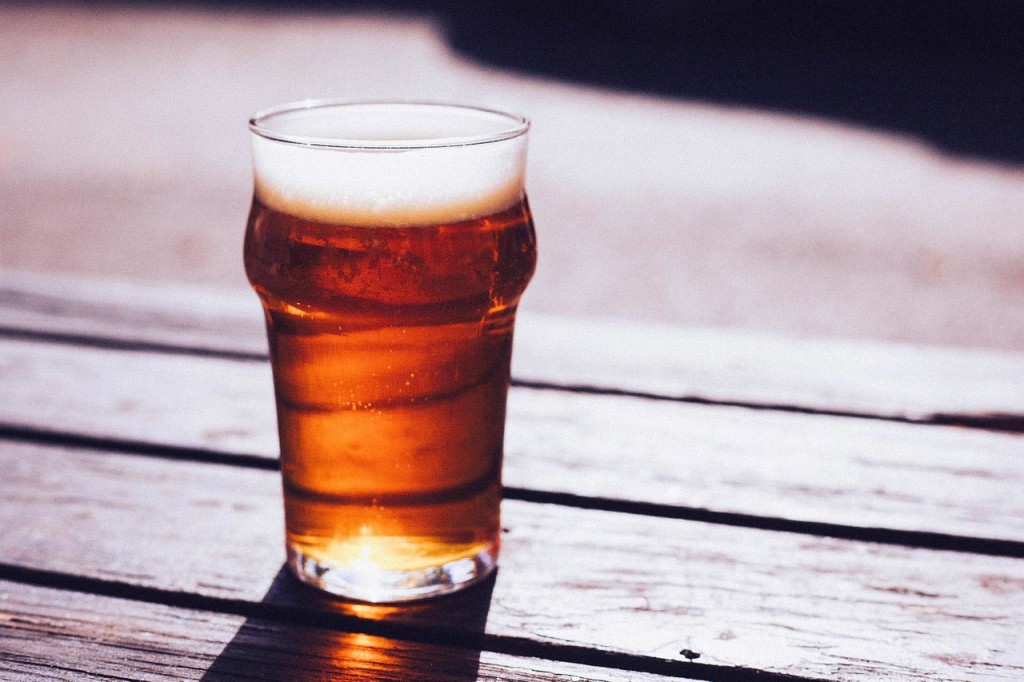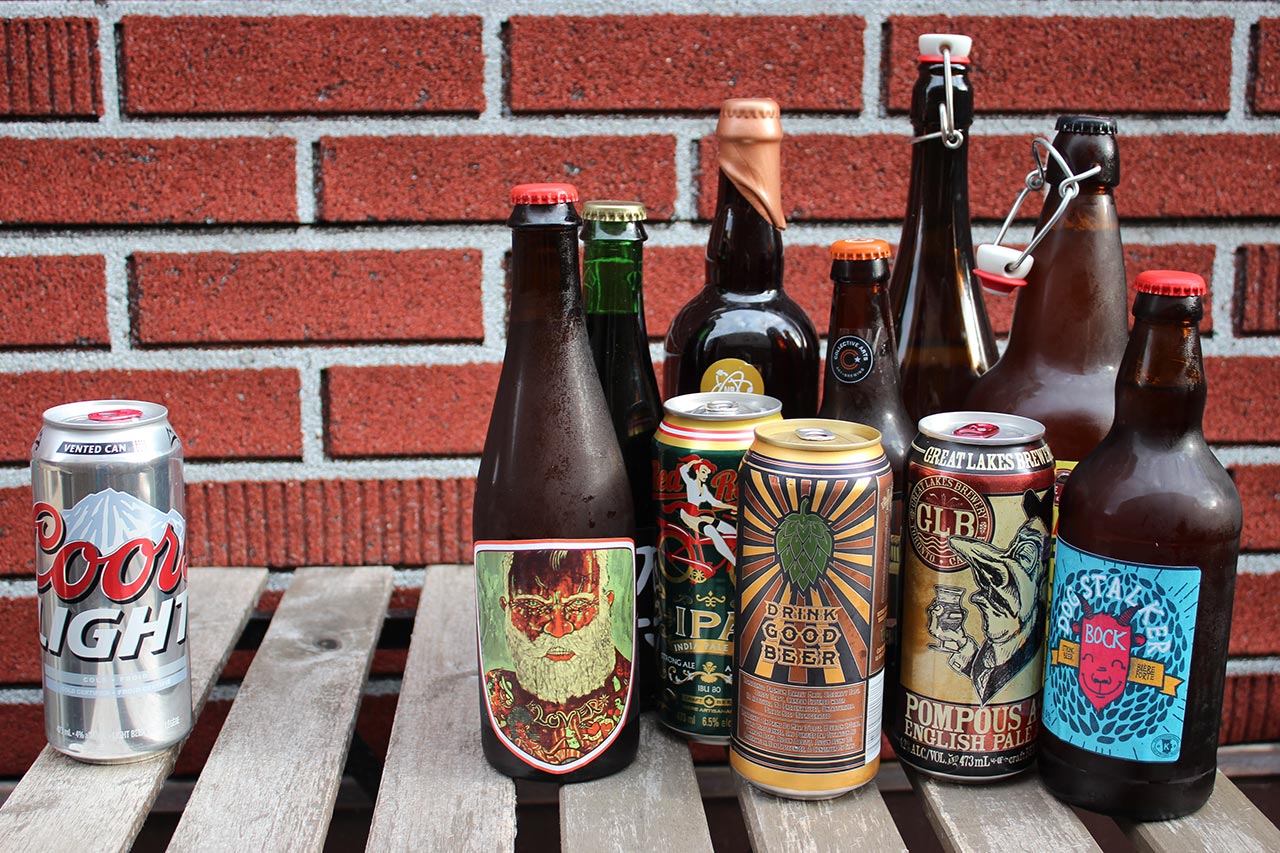You’ve heard of it. Your friends are drinking it. It’s time you put down that light lager and try a craft beer.
Craft Beer.
Two words that are pretty well unavoidable these days when out enjoying libations at a party or the local pub.
You probably have a friend (you know who I’m talking about) who’s always hyping up the latest citra dry-hopped pale ale, double chocolate cranberry stout, or some other equally fancy-sounding beverage. Maybe you’ve even indulged in a pint or two of ‘craft beer’ yourself, but the question remains… what exactly is it?
A quick note before we go any further: If there are any card-carrying beer nerds, enthusiasts, experts, connoisseurs, bloggers, Cicerones, Prud’hommes, or straight up beer snobs reading this (myself included), this article isn’t for you. We’re starting with the basics. Go grab a pint of the latest barrel-aged Brett sour beer at the bar and I’ll meet you there in 10.
A simple definition?
Trying to find an exact definition for craft beer isn’t easy. Depending on whom you ask and where you are, you will get a slightly different answer.
The American Brewer’s Association (ABA) defines a craft brewer as:
- Small: the brewery must produce six million barrels of beer or less each year. To put that in perspective, one barrel is equal to about 1.17 hectolitres and there are about a dozen 2-4s (a pack of 24 beers) in a single hectolitre. In 2013, Budweiser shipped about 18.7 million hectolitres of beer, while a small local craft brewer like Toronto’s Steam Whistle produced just 80,000 hectolitres.
- Independent: be less than 25 percent owned or controlled by a non-craft brewer.
- Traditional: should focus on brewing beers that derive their flavour from “traditional or innovative brewing ingredients and their fermentation.”
BrewDog, a Scotland-based craft brewery that has risen to adoration in recent years, proposes a similar definition for European Craft Breweries:
- Small: annual production volume is 500,000 hectolitres of beer or less
Authentic: “does not use rice, corn or any other adjuncts to lessen flavour and reduce costs” (something large multi-national brewers are known for). - Honest: all their beer is brewed at craft breweries and all ingredients/where the beer is brewed is clearly labelled.
- Independent: less than 20 percent ownership by a non-craft brewer.
Like the ABA, Ontario Craft Brewers (a trade association representing 45+ breweries in Ontario, Canada) also defines craft brewers as Small, Independent, and Traditional. However, their production volume requirements are the most conservative of the three, stating: “the current maximum size of an Ontario Craft Brewer is 400,000 hectolitres of annual worldwide beer production.”
While the beer production volumes and other aspects of these definitions have their nuances, the one thing they all agree on is that craft beer should well-made and possess exceptional flavour.
It’s about taste, variety, and quality.
If you ask the average consumer what a beer is supposed to look and taste like, they’ll probably say something like “clear, clean, light, refreshing, and cool.”
Ask them which brand comes to mind when they think of beer and I bet they’ll name one of the following: Coors Light, Molson Canadian, Budweiser, Bud Light, Labatt Blue, Carling Lager, Busch Lager, Keiths, Heineken, or Corona.
These answers shouldn’t be surprising, after all, the brands listed above are the top 10 selling beers at The Beer Store, a private retail chain that controls as much as 79 percent of beer sales in Ontario.
But are any of these beers considered ‘craft’? Nope, and here’s why…
For starters, all 10 are owned by one of the three global brewery conglomerates - either AB InBev, SABCoors, or Heineken - who have a collective annual revenue of over 80 billion dollars a year. So they’re anything but small or independent. (For more on who owns which beer brands check out this neat article.)
the general public has basically been conditioned to believe that when it comes to beer there’s only this one simple, bland style
And with the exception of Alexander Keith’s India Pale Ale, which isn’t actually an IPA (a story for another time), they are all Light American Lagers. Light lagers can be a fine style but when the big brewers make them they tend to use rice, corn and other cheap adjuncts - instead of true quality ingredients - to keep costs low, profits high and to intentionally lessen flavour.
Over the last 80 years or so since the end of US Prohibition, the general public has basically been conditioned to believe that when it comes to beer there’s only this one simple, bland style. It’s easy to drink, not too bitter or obtrusive, and fairly simple and cheap to manufacture.
The reality is there are dozens and dozens of different beer styles and flavours from around the world that have been brewed for hundreds of years. There are Golden Ales, Pale Ales, Amber Ales, Bocks, Porters, Stouts, Pilsners and more - the list goes on. In fact, the Beer Judge Certification Program (BJCP) outlines over 95 unique styles of beers, meads and ciders!
Get some innovative brewers together experimenting with different strains of quality malts, hops and yeasts in small handcrafted batches and there’s a near infinite number of combinations that can be used to produce interesting and flavourful craft beers.

Try something new.
To be clear: just because a beer is a different style from the mass-produced light lagers that seem to have become the pinnacle of North American beer, doesn’t automatically mean it’s craft beer. Similarly, just because something isn’t craft beer, doesn’t mean it can’t be good.
Guinness is an Irish dry stout. It’s dark, it’s rich, it’s creamy and it’s a great tasting beer. But the fact that over 8.5 million hectolitres of it are mass-produced across 60-plus countries each year (by a multi-billion dollar corporation no less), means that Guinness is not what you would typically call a ‘craft beer’.
When all is said and done, beer is just beer. It’s meant to be enjoyed and really shouldn’t be taken too seriously. Drink what you like, and if what you like is light lagers there’s nothing wrong with that.
Still, there is a much richer and diverse universe of beer out there waiting for you and I’d encourage you to experiment and try something new. The tides of change are in the air and millennials everywhere are already beginning to ditch beers like Budweiser in favour of flavour.
You might not like every craft beer you try, but chances are you’ll find something interesting and new that you enjoy and your palate will forever thank you. Now go drink some beer…
Cheers!

